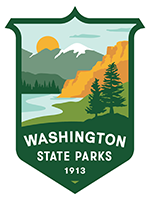We are aware of a text message scam targeting State Parks visitors. It is asking people to share banking information for delinquent payments. This is a scam – we do not ask for payments via text message. Do not click the link, share your information or reply if you receive this text message.
Search results
379 results found
Illahee State Park takes its name from the Chinook jargon word for “homeland.” The park lies within the traditional territories of Coast Salish Indigenous people whose present-day descendants include members of the Suquamish Tribe. Indigenous historian Vi Hilbert noted that today’s park occupies a site known as Xitca’sEb, meaning “to feel a tremor.” Geologists have mapped two main faults of the Seattle Fault Zone running north and south of the park area. The fault zone was the site of a major earthquake 1,100 years ago.
Nationwide recruitment efforts lead to internal talent
OLYMPIA – March 16, 2022 – The Washington State Parks and Recreation Commission announced today the appointment of Diana Dupuis as the agency's new director. Dupuis will be the first female director since the agency was established more than 100 years ago.
OLYMPIA — The Washington State Parks and Recreation Commission (Parks) has begun using a new electronic bidding system for public works projects.
The launch of the Municipal Research and Services Center (MRSC) Bonfire system marks the first phase in the agency’s larger plan to modernize and streamline procurement across all competitive applications.
